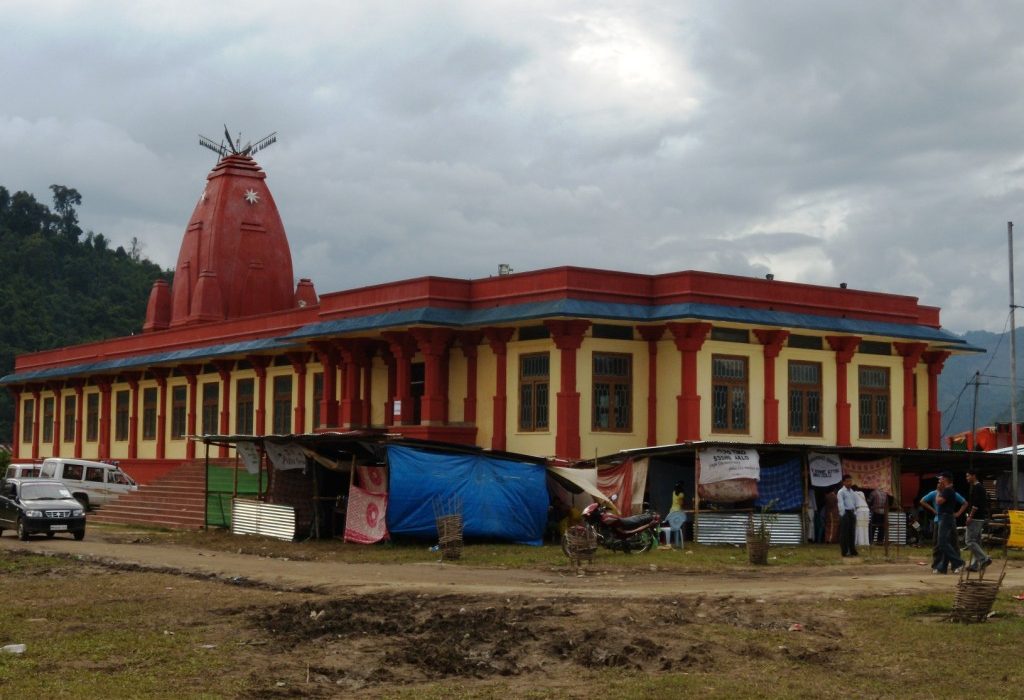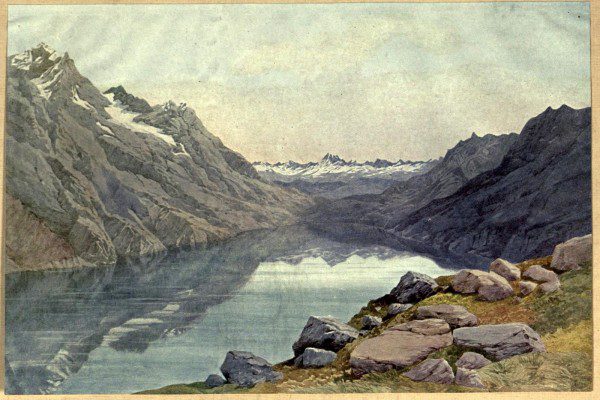A dialogue with indigenous religious practices subjects the idea of religion itself to critical enquiry and dismantles conservative structures.
At a juncture where a multiplicity of visions, knowledge and information provide a daunting combination of idealism and pragmatism, the “order of existence” as manifest in “religion” puts one in a quandary. On one hand, it seems like a nebulous concept, furtively enshrined and remembered in a dusty corner of one’s mind. On the other, it seems religion is simultaneously a disruptive and reassuring “text”, which delineates the boundaries for the insider/outsider and thus constitutes and conforms communities from the margins and beyond.Lifelong associations vis-à-vis religion have thrived on concepts of plurality and inclusiveness and have mobilised in diverse ways the categories of caste, class, tradition and modernity to define alternative understanding of “individual” and “community”. How do we then articulate religion today within the realm of public discourse and personal convictions? In order to access religion beyond simplified binaries and perhaps, establish “secular” authority, one may approach its myriad roles through concentrated, systematic understanding of the observance of religion at the personal level and in relation to its larger resonance in the community.
Today, one is wary of religion—of what it may connote and how one’s affinities towards any form of religion may define one’s proclivities as a so-called global citizen. Therefore, in order to gauge the unease generated by religion, it becomes imperative to understand the structures of expectation and to formulate possibilities of “ethical” dialogue within its very framework.
In order to access religion beyond simplified binaries and perhaps, establish “secular” authority, one may approach its myriad roles through concentrated, systematic understanding of the observance of religion at the personal level and in relation to its larger resonance in the community.
Religious movements in indigenous communities in the Northeast have often brought in the idea of a deity in the equation within a public agitation. Consequently, a structure of meaning is derived from the location of a deity in a particular place, which in turn has complicated the public realm beyond recognition. Such religious assertions in the Northeast foreground a real, complex trajectory of a nation with its triumphs and failures, strengths and weaknesses, clarities and confusions. In the present-day context of a glocal world, the relevance of religion can be sought through questions on socio-cultural, historical and rhetorical problems shaping indigenous identity in India, which help understand the question of indigenous voices and their stories of marginalisation and the fact that indigenous people are agents rather than objects of change.
In the late 1960s and early ’70s, language movements in the Northeast had reached a point of culmination and tumultuous conflict. Intellectuals from different indigenous communities decided to come together to develop ways to negotiate the presence of mainstream religious and cultural practices and to formulate ways of ensuring that indigenous practices and beliefs would continue to be part of collective memory.
On 28 August 1968, Adi intellectuals organised a meeting in Along, the district headquarters of West Siang (Arunachal Pradesh) to form the Donyi-Polo Mopin-Solung Dere. Donyi and Polo literally imply the sun and the moon and are worshipped by the the Adi, Nyishi, Apatani, Tagin, and the Galo communities, who comprise the Tani people of Arunachal Pradesh. The deities are venerated for prosperity, fertility, and protection from natural calamities. Solung and Mopin are important festivals of the Minyongs and Galos, and Dere is the community hall.
Such religious assertions in the Northeast foreground a real, complex trajectory of a nation with its triumphs and failures, strengths and weaknesses, clarities and confusions.
The late Talom Rukbo, the founding member of the Donyi-Polo movement, emphasised on the relevance of institutionalising Donyi-Poloism: “Tradition means the way of living of a society practicing its socio-religious culture, economic life, the way of preserving history, literatures and all others norms of social life inherited from time immemorial which may be called social character and identity” (Rukbo 2005, 33). According to Rukbo, Donyi-Poloism constitutes two aspects: material Donyi-Polo and spiritual Donyi-Polo. The material attributes reference to the sun and the moon, whereas the spiritual aspect comprises a synthesis of the sun and the moon as an absolute power that governs the universe eternally and scientifically. Donyi-Polo also symbolises virtues such as purity, beauty, simplicity, love, and frankness, which eventually leads to the manifestation of virtue and morality as a Supreme Being. Oshong Ering, a prolific writer from the region, states:
Since there are no written documents and systematic oral literature to substantiate the philosophic conception of Donyi-Polo, we may communicate things by analysing traditional belief, faith and practices…Depending upon circumstances and situations, by this term, they mean truth, purity, enlightenment, wisdom, justices, righteousness, peace and nonviolence. (Ering 2004, 36–37)
An understanding of Donyi-Polo is a semiotic exercise, which preexisted and reconstituted with the gradual presence of the great religions of the world in the NEFA. Under the leadership of intellectuals like Talom Rukbo, the people from the Abotani group such as the Adi, the Nyishi and the Apatani formed cultural societies in the name of the Tani Jagriti Foundation, the Donyi-Polo Youth Federation, and the Donyi-Polo Yelam Kebang at Pasighat (Rukbo 1998, 57–75; 2004, 92–100), in order to restore the fast-depleting rituals, prayers and hymns.
The material attributes reference to the sun and the moon, whereas the spiritual aspect comprises a synthesis of the sun and the moon as an absolute power that governs the universe eternally and scientifically.
Closely connected to the deities of Donyi-Polo are the Hemphu-Mukrang deities of the Karbi pantheon in Karbi Anglong district of Assam. The presence of the Hi-i (demon) and Arnam (deity) in Karbi religious practices link one generation to another and connect speaker and listener in communal experience, thereby uniting the past and the present in memory. The presence of both positive and negative forces in the Karbi religious pantheon is an expression of its inherent duality. The term Hi-i-Arnam has been coined by Karbi elders and is never used in the reverse.
The world of Karbi folklore, cosmologic tales, and ritual practices are an integral part of Karbi religious tradition, notwithstanding the overwhelming presence of the world’s “great religions”. The appropriation of Karbi religious practices by non-indigenous sociopolitical and cultural representatives testifies to a painful history of negation of everything related to “indigenity”, which is considered an “otherness” based on “preconceived notions of Native cultures and peoples as “static” and on mystifications of a land-based ideology.” (Eigenbrod 2005: 24) Karbi cultural activists today are trying to overcome the vulnerability of their religious positions by revitalising and retelling stories of Peng, Hemphu-Mukrang, Hi-i, and other territorial deities and ancestor spirits (tirim).
Global indigeneity is often perceived as a part of cultural imagination in tandem with hybrid identities. However, one needs to have a deeper understanding of the processes behind the formation of such imaginations and what it may do for us. Often, indigeneity offers paradigmatic instances of indigenous politics, which nurture a complex relationship to perceived identities. Critical attention to certain religious practices of indigenous communities from the Northeast helps to understand issues of social justice, sustainable use of natural resources and political ideologies. Further, a dialogue with indigenous religious practices subjects the idea of religion itself to critical enquiry and dismantles conservative structures through the pervasive presence of insider/outsider. Cognition of indigenous religious practices creates a cosmology, a way of being, of political action which, does not preclude self-knowledge but also addresses the deep-rooted ambivalence therein.
—
References:
Eigenbrod, Renate
- Travelling Knowledges: Positioning the Im/Migrant Reader of Aboriginal Literatures in Canada, Winnipeg: University of Manitoba Press.
Ering, Oshong
- 2004 Philosophy of Donyi-Polo. In Understanding Tribal Religion, T. Mibang and S. K. Chaudhuri, eds., 35–38. New Delhi: Mittal Publications
Rukbo, Talom
- 1998 Donyi-Polo faith and Practice of the Adis, in Indigenous faith and Practices of the Tribes of Arunachal Pradesh, eds. M. C. Behera and S. K. Chaudhuri, Himalayan Publishers, New Delhi.
- 2005 Institutionalization of a tradition: Donyi-Polo Yelam Kebang, a case study. In Traditional Systems of North-East India, Vivekananda Kendra Institute of Culture, eds., 33–39. Pasighat Seminar. Guwahati: Vivekananda Kendra Institute of Culture.
- 2004 Faith and Practices of the Adi, in Traditional Customs and Rituals of Northeast India, ed. P. C. Sharma, Vivekananda Kendra Institute of Culture, Guwahati,pp 92-100.















